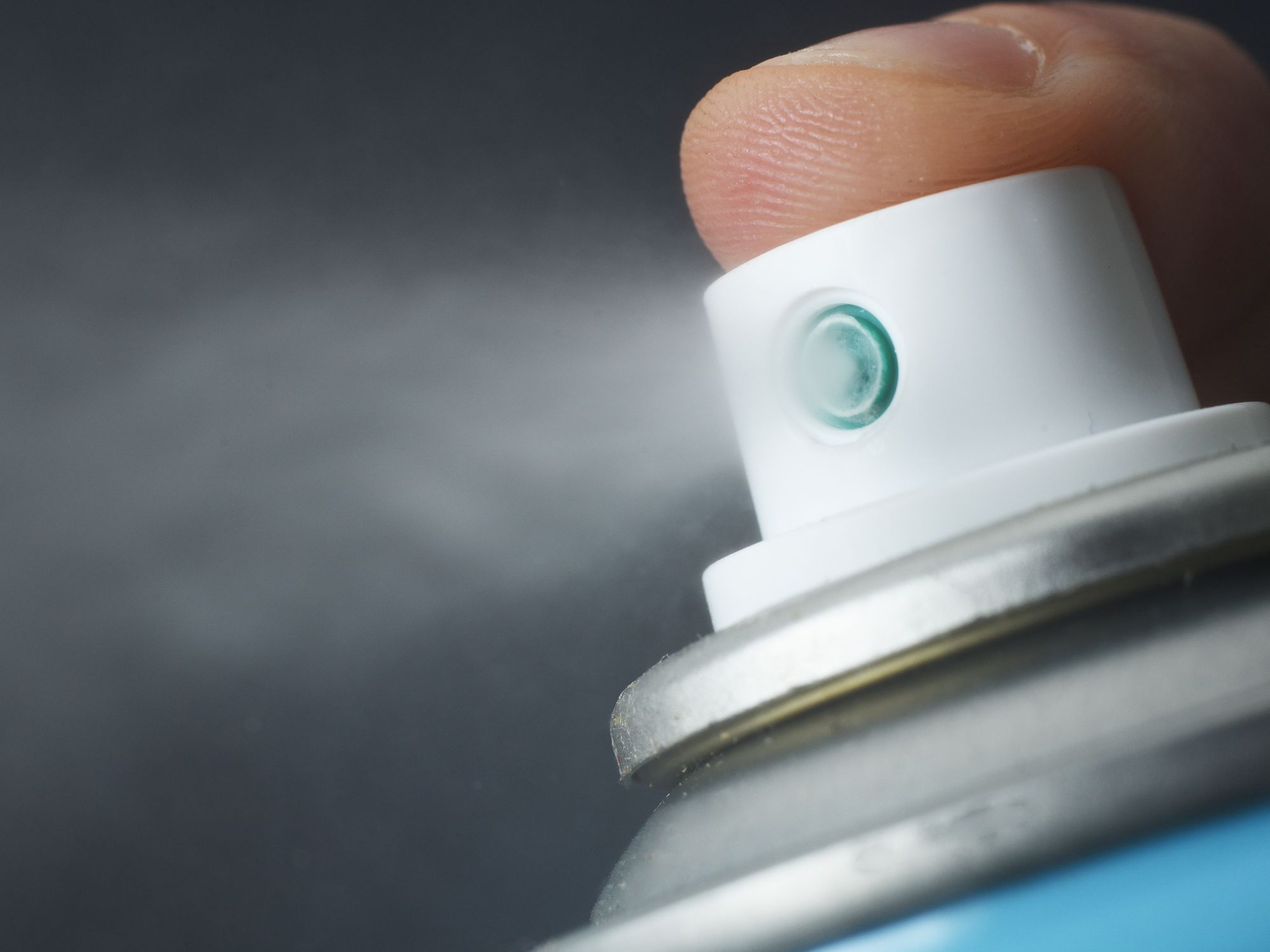Non-empty aerosol cans

- Not all aerosol cans are hazardous wastes, but only those that exhibit a hazardous waste characteristic or contain a substance listed in the hazardous waste regulations.
- “RCRA empty” aerosol cans that are recycled may be considered exempt scrap metal.
- Small and large quantity handlers of universal wastes must manage universal waste aerosol cans in a way that prevents releases of any universal waste.
In late 2019, the Environmental Protection Agency (EPA) added hazardous waste aerosol cans to the universal waste program. 40 CFR 273.9 defines an aerosol can as a non-refillable receptacle containing a gas compressed, liquefied, or dissolved under pressure, the sole purpose of which is to expel a liquid, paste, or powder and fitted with a self-closing release device allowing the contents to be ejected by the gas.
An aerosol can is usually a small steel or aluminum container, designed to be handheld and is sealed with its contents under pressure. The can may include several components, including:
- The can or container that stores both propellant and the product.
- An actuator or button at the top of the can that is pressed to deliver the products.
- A valve, which controls delivery or flow of the product.
- The propellant (a compressed or liquefied gas), which provides the pressure in the container to expel or release the product when the actuator is pressed to open the valve.
- The product.
- A dip tube, which is connected to the valve to bring the product up through the can to be released when the actuator is pressed.
Not all aerosol cans are hazardous wastes, but only those that exhibit a hazardous waste characteristic or contain a substance listed in the hazardous waste regulations.
Potential hazards
When aerosol cans are mismanaged, accidentally punctured, or exposed to excessive heat, the internal pressure in the cans may exceed the design strength of the can, resulting in the can bursting and releasing its contents. If the propellant of product is ignitable, the contents may catch fire as they are released and exposed to oxygen. Or the bottom of the can may detach, potentially causing the upper part of the can to become a projectile.
Can puncturing
An issue that is unique to aerosol cans is can puncturing to drain the contents of the cans before disposal. Universal waste handlers that choose to puncture and drain cans must recycle the empty cans along with the following:
- Use a device specifically designed to safely puncture aerosol cans and effectively contain the residual contents and any emissions.
- Establish and follow a written procedure describing how to safely puncture and drain the can; maintain a copy of the manufacturer’s instructions onsite; and ensure employees operating the device are trained in the proper procedures.
- Ensure puncturing is done in a manner to prevent fires and the releases of any component of the universal waste into the environment. (E.g., place the device on a solid, flat surface in a well-ventilated area.)
- Immediately transfer the contents from the waste aerosol can or puncturing device to a container or tank that meets the hazardous waste generator requirements.
- Conduct a hazardous waste determination on the contents of the emptied aerosol can. These contents may be subject to all of the applicable hazardous waste regulations.
- If the contents are not hazardous waste, the handler may manage the waste as a solid waste.
- A written procedure must be in place in the event of a spill or leak and a spill clean-up kit must be available. All spills or leaks of the contents of the aerosol cans must be cleaned up promptly.
Empty cans
“Resource Conservation and Recovery Act (RCRA) empty” aerosol cans (261.7) that are recycled (not disposed of) may be considered exempt scrap metal (meaning all such punctured cans are exempt from hazardous waste requirements when recycled). Empty cans may still be managed as universal waste if that makes things easier on the handler.
For the propellant, a container that has held a hazardous waste that is a compressed gas is empty when the pressure in the container approaches atmospheric.
Management of universal waste aerosol cans
Both small and large quantity handlers of universal wastes must manage universal waste aerosol cans in a way that prevents releases of any universal waste. The cans must be accumulated in a container that is structurally sound, compatible with the contents of the cans, lacks evidence of leaking, spilling, or damage that could cause leaking under reasonably foreseeable conditions, and is protected from sources of heat.
If the cans show evidence of leaking, they must be packaged in a separate closed container or overpacked with absorbents, or immediately punctured and drained.
Handlers may conduct the following as long as each individual aerosol can is not breached and remains intact:
- Sorting aerosol cans by type;
- Mixing intact cans in one container; and
- Removing actuators to reduce the risk of accidental release.
